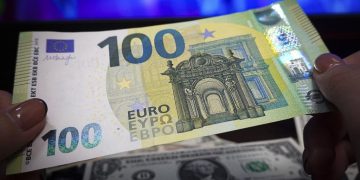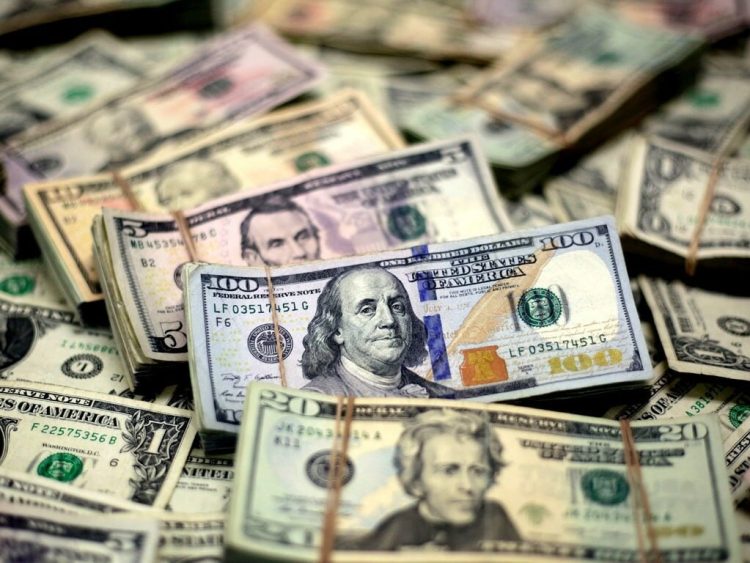The US dollar has long reigned as the undisputed king of global currencies, anchoring international trade, dominating foreign exchange reserves, and embodying the financial muscle of the United States. Yet in recent months, signs of vulnerability have begun to appear. The dollar’s slide against a basket of major currencies has raised eyebrows across markets, triggering a wave of questions about its enduring dominance. Is the greenback merely experiencing a cyclical dip, or are we witnessing a more structural decline that could shift the fulcrum of global power?
The Dollar’s Downturn: A New Phase or an Old Pattern?
In the past year, the dollar index—tracking the greenback against major currencies like the euro, yen, and pound—has seen a consistent decline of nearly 8%. While fluctuations are nothing new, the context behind this depreciation feels different. The US Federal Reserve’s dovish pivot in late 2024, growing twin deficits, and concerns over long-term fiscal sustainability have all contributed to weakening investor confidence. In parallel, rising geopolitical fragmentation and dedollarization rhetoric from emerging powers have made the dollar’s drop seem less like an anomaly and more like a potential inflection point.
At the same time, central banks around the world have begun diversifying their reserves, increasing holdings in gold, the euro, and even the Chinese renminbi. This diversification trend, while still in its early stages, points to a subtle erosion of the dollar’s once-unquestioned supremacy.
Exporters Rejoice: A Boon for Trade-Driven Economies
One of the most immediate impacts of a weaker dollar is felt in export-driven economies, particularly in Asia and parts of Europe. Nations like Japan, South Korea, and Germany have seen their exports become more competitively priced on the global market. In Japan, where the yen has been under pressure for years, a weaker dollar translates into more favorable exchange rates for Japanese goods sold abroad—benefitting large manufacturers and boosting GDP growth figures.
Similarly, emerging market economies that rely heavily on exports—Vietnam, Mexico, and Bangladesh, for instance—find themselves more favorably positioned. Their goods, already cost-effective, now appear even cheaper to American and European buyers. In essence, a declining dollar acts as a tailwind for countries that have built their growth models around industrial production and foreign trade.
But perhaps more striking is the strategic opportunity it presents to China. With its massive manufacturing sector and ambitions for the yuan to gain international stature, a weaker dollar enhances the competitiveness of Chinese exports while allowing policymakers more leeway to promote the renminbi in bilateral and multilateral trade deals.
Commodity Powerhouses Strike Gold—Literally and Figuratively
A declining dollar tends to drive up the price of dollar-denominated commodities like oil, gold, and copper. This dynamic has been a boon for resource-rich countries. Nations in the Middle East, Sub-Saharan Africa, and Latin America—long reliant on commodity exports—have reaped substantial windfalls from this currency environment.
Take Saudi Arabia and the UAE, whose oil revenues have surged due to rising crude prices. These gains not only bolster national budgets but also fund ambitious economic diversification efforts, such as Saudi Vision 2030. Similarly, countries like Chile and Peru, rich in copper and lithium, are benefiting from the global green transition—especially as the weak dollar supports higher commodity valuations.
This effect isn’t confined to emerging markets. Canada and Australia, both commodity-exporting developed economies, are also seeing gains in their trade balances and fiscal revenues. The dollar’s decline has, in effect, redistributed economic power in favor of nations with tangible resources—a reversal from the digital and financial asset dominance of the past decade.

Import-Dependent Nations Face a Double Whammy
While exporters and commodity producers celebrate, import-reliant countries are grappling with a different reality. Nations that rely heavily on importing food, fuel, and machinery are facing higher costs across the board. In countries like Egypt, Pakistan, and Turkey, the dollar’s fall has translated into costlier imports, swelling current account deficits and stoking inflation.
Many of these countries also carry substantial dollar-denominated debt. A weaker dollar can offer some relief in interest payments, but the rising price of critical imports often outweighs that benefit. The combination of higher import bills and already fragile economic conditions creates a precarious scenario for many low-income and lower-middle-income economies.
In Europe, the situation is more nuanced. While exporters benefit, households and companies face inflationary pressures due to more expensive energy imports—especially natural gas and oil. This has complicated monetary policy decisions for the European Central Bank, which must balance the need to support growth with inflation containment.
The Ripple Effects: Trade Balances and Shifting Investment Flows
The dollar’s movement doesn’t merely impact trade flows—it also sends waves through global investment patterns. As the dollar weakens, capital tends to flow toward higher-yielding or more stable emerging markets. Investors, seeking both returns and currency appreciation, begin to reevaluate risk-return profiles, leading to more diversified global capital allocations.
This dynamic has led to a re-rating of assets in countries like India, Brazil, and Indonesia. Their equity markets have seen upticks in foreign inflows, while their bond markets are becoming more attractive due to positive real interest rates and improved macro fundamentals. The weakening dollar, paradoxically, makes these destinations more appealing to global investors who were once dollar-dependent.
Another area of impact lies in sovereign debt markets. A weaker dollar reduces the burden of dollar-denominated debt in local currency terms, offering temporary breathing room for many developing nations. However, this relief is counterbalanced by increased inflation risks, which may prompt domestic interest rate hikes and thereby complicate debt management strategies.
Currency Diplomacy and the Future of the Greenback
The dollar’s slide is also a diplomatic signal. As countries become more vocal about dedollarization—especially the BRICS bloc with its cross-border payment initiatives and talk of a common currency—Washington’s financial hegemony could face long-term challenges. While these alternatives are still far from displacing the dollar, they highlight the growing frustration with a system many see as US-centric and vulnerable to unilateral sanctions.
In response, the US Treasury and Federal Reserve must tread carefully. Overplaying sanctions or allowing fiscal imbalances to balloon unchecked could further erode global confidence. At the same time, domestic political polarization and recurring debt ceiling dramas cast shadows over the dollar’s perceived safety and reliability.
Still, it’s crucial to remember that alternatives like the euro or yuan face structural limitations. The eurozone lacks fiscal unity, while China maintains tight capital controls. Thus, while the dollar’s position may be challenged, a full dethronement remains unlikely in the short to medium term.
Conclusion: A New Chapter or Just Another Cycle?
Is the dollar losing its crown? Not entirely—but its grip is loosening. The recent depreciation reflects a confluence of cyclical forces, structural weaknesses, and geopolitical shifts. While some nations stand to gain, others face mounting challenges. What remains certain is that the global financial architecture is entering a period of greater multipolarity, where power, influence, and risk are more evenly distributed.
This does not mean the end of dollar dominance, but it does suggest a world where the greenback must increasingly share the stage. For policymakers, investors, and citizens alike, adapting to this new balance will require not just awareness—but agility.

































